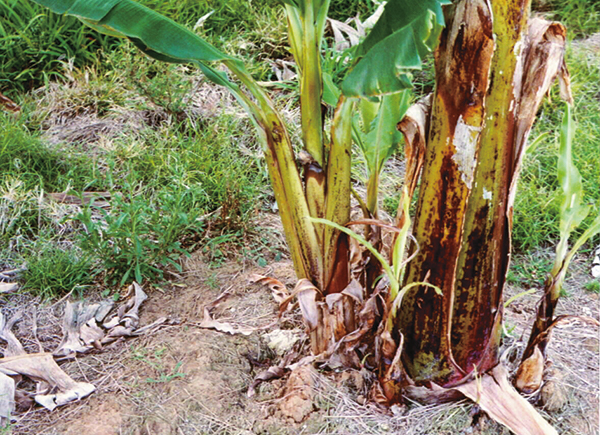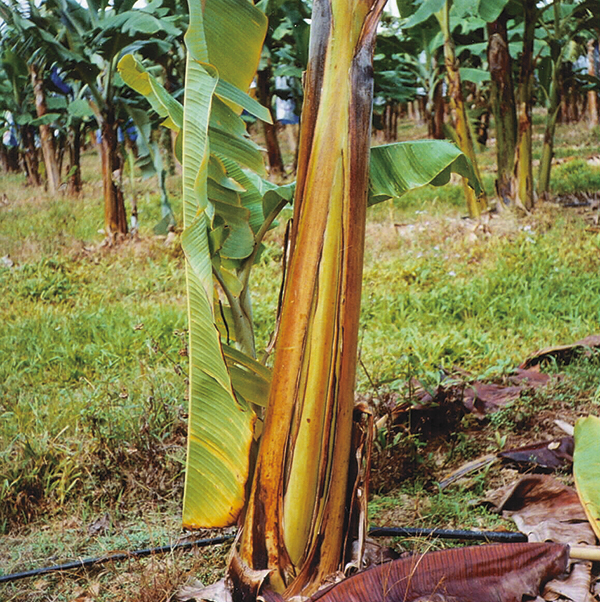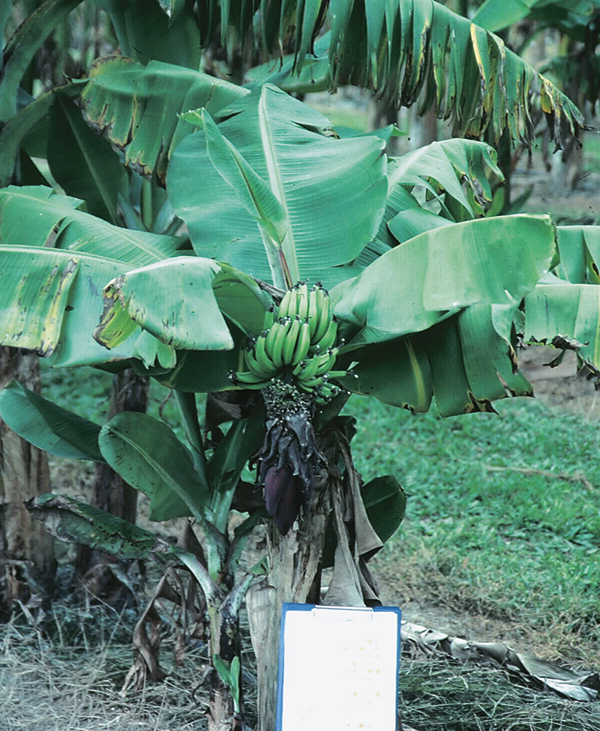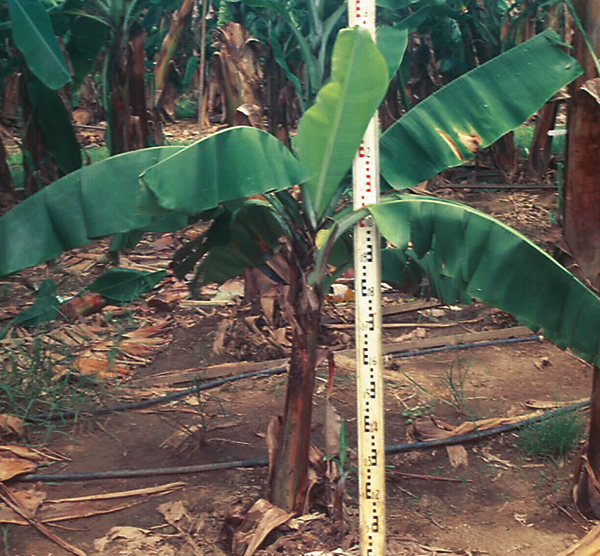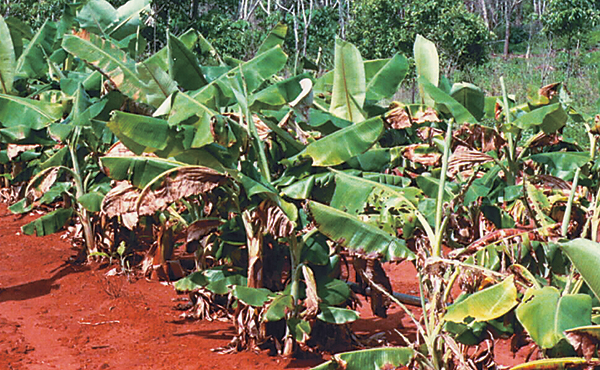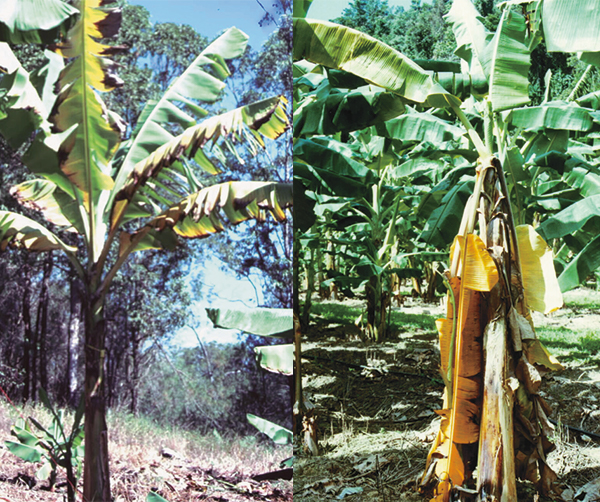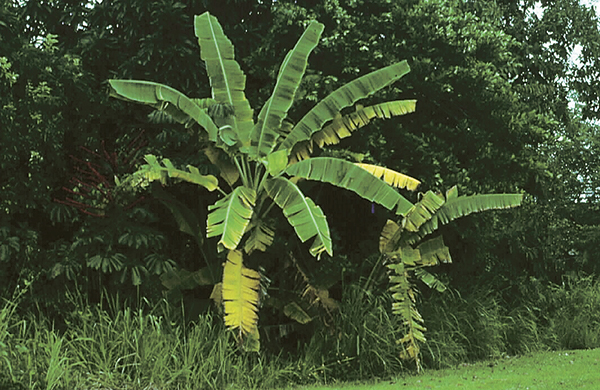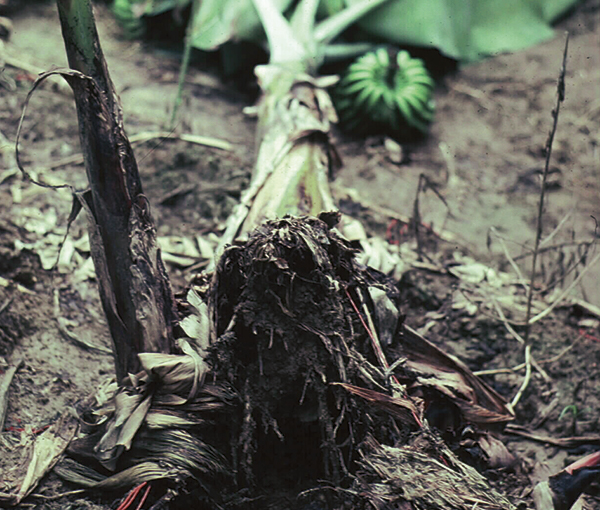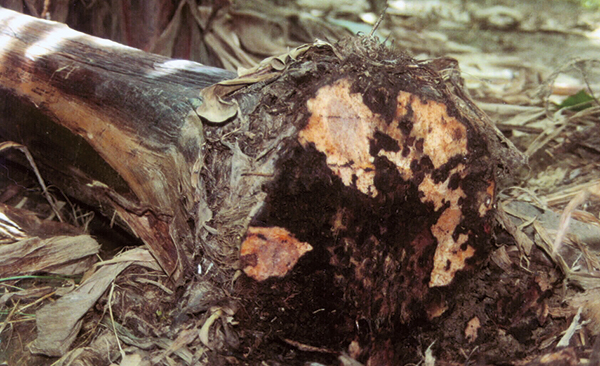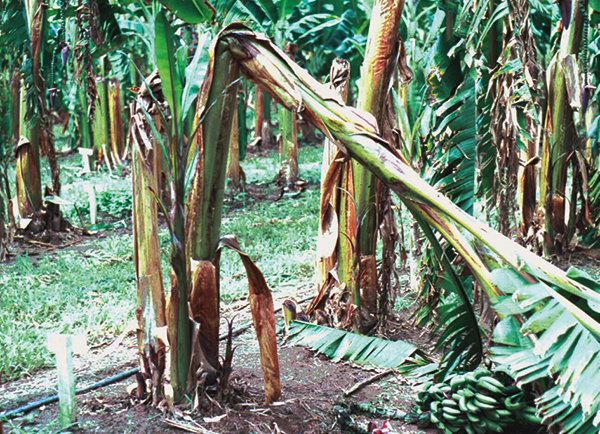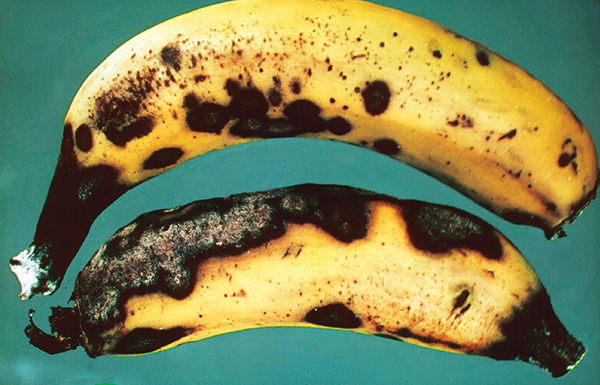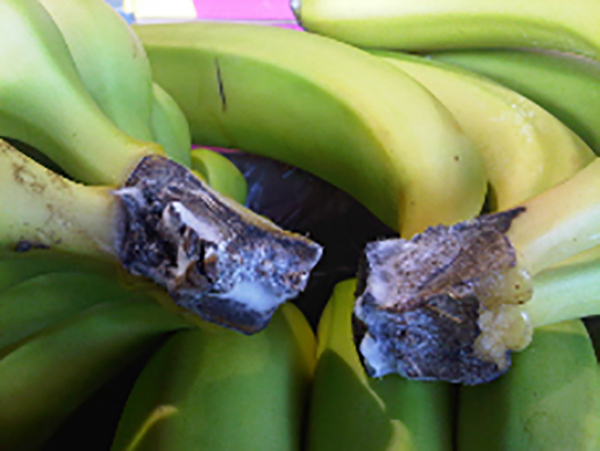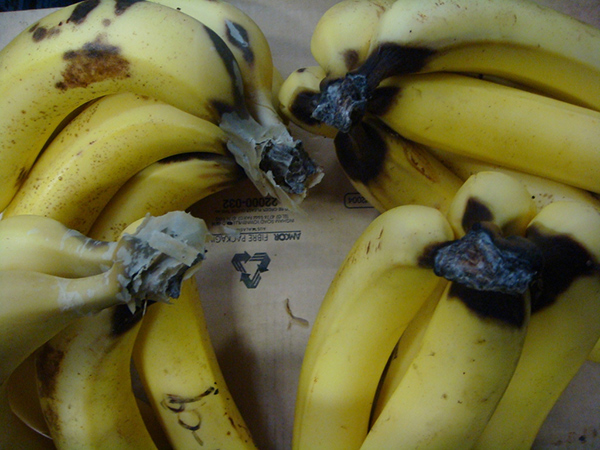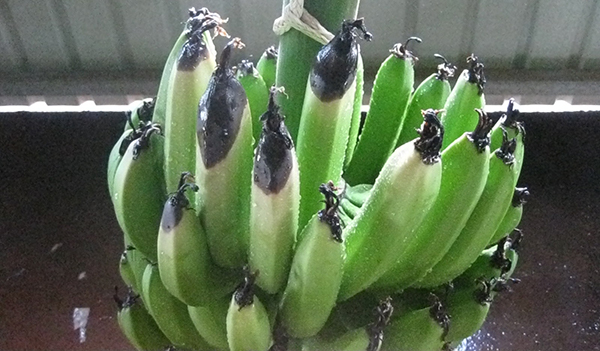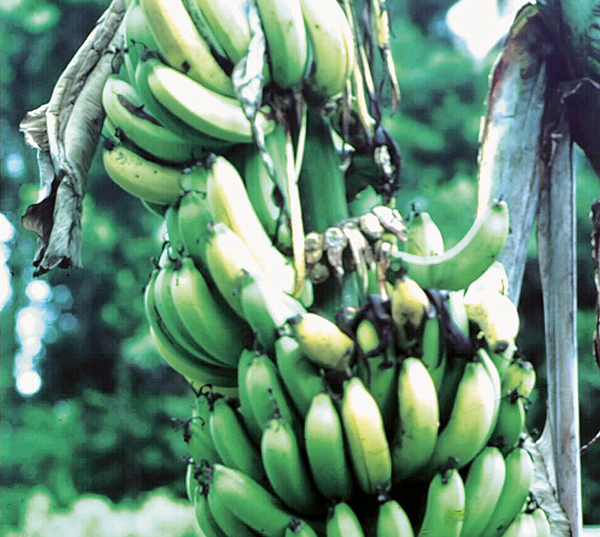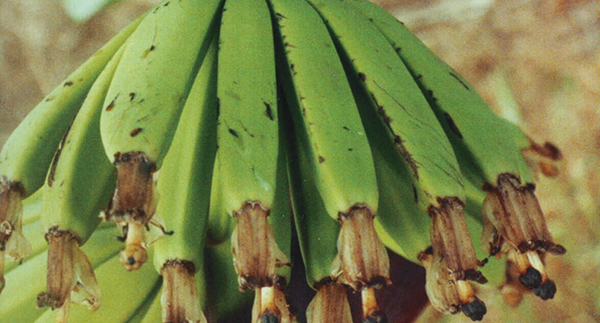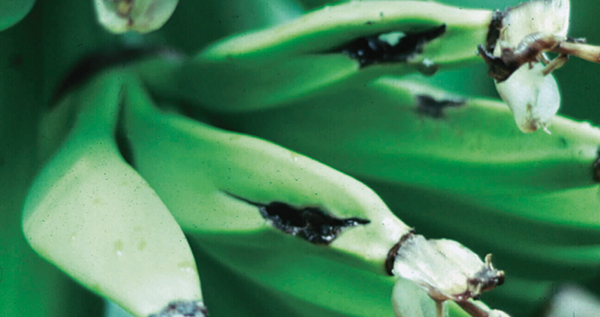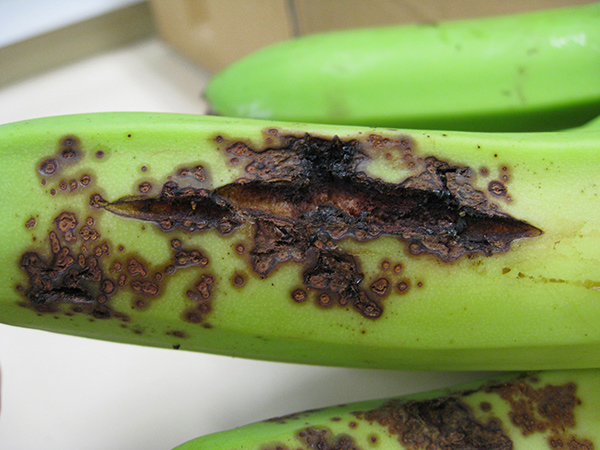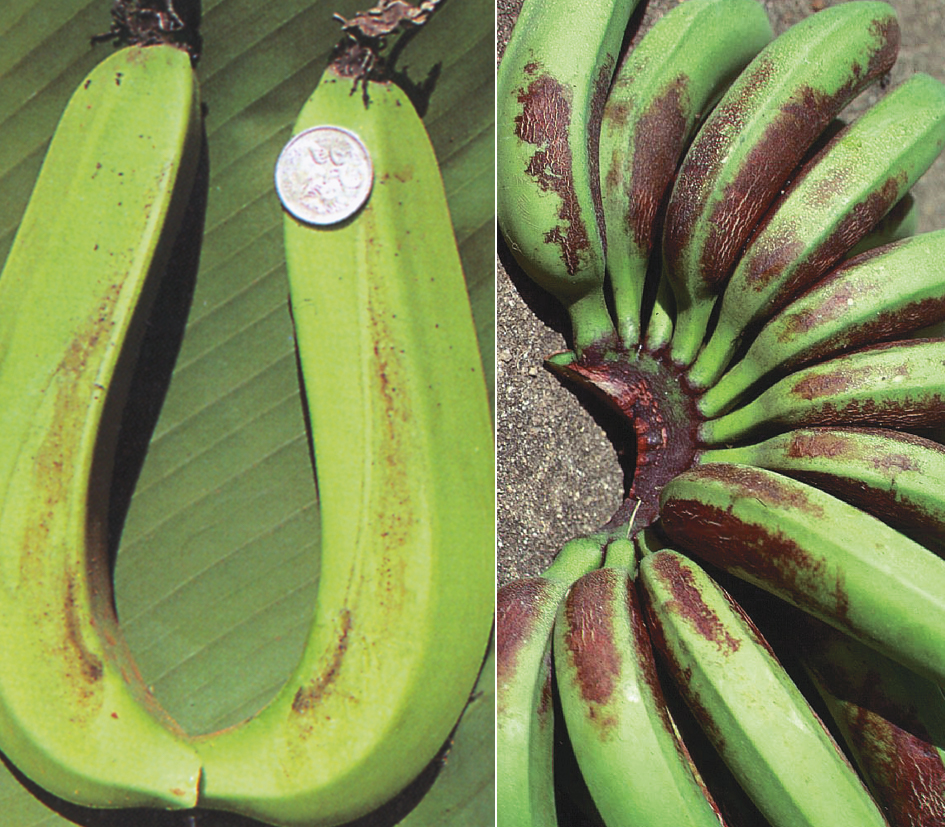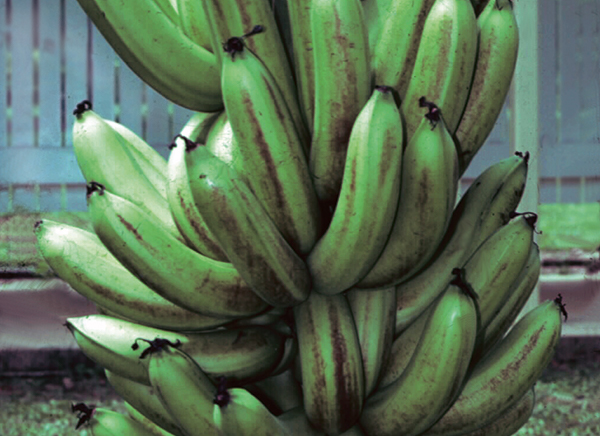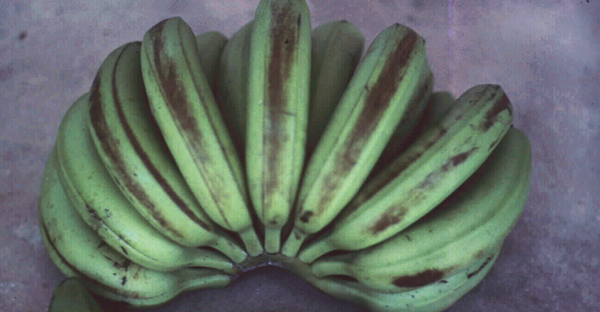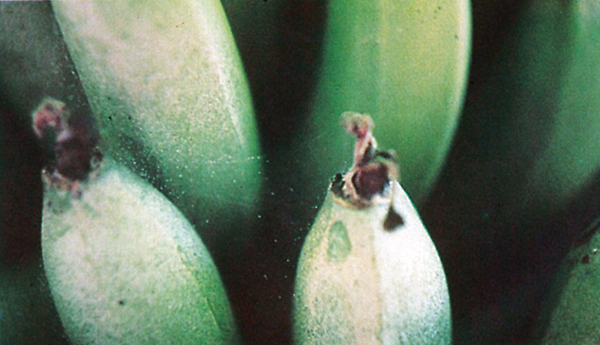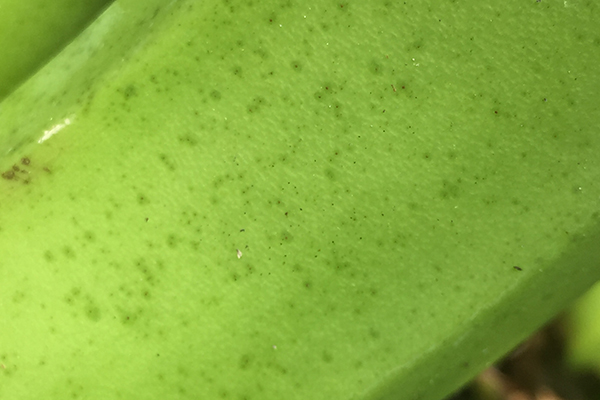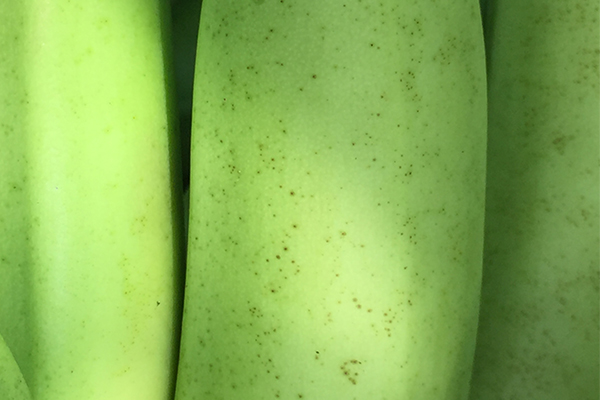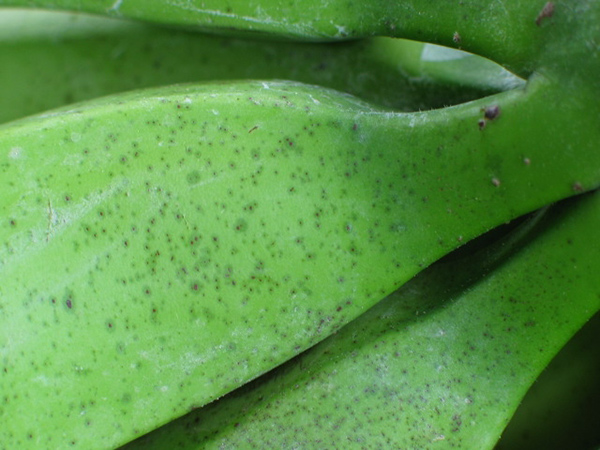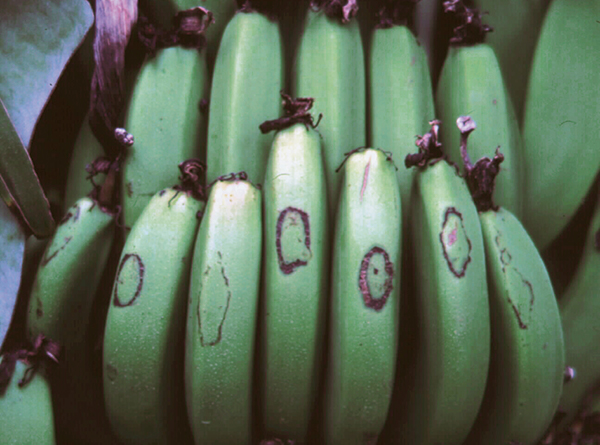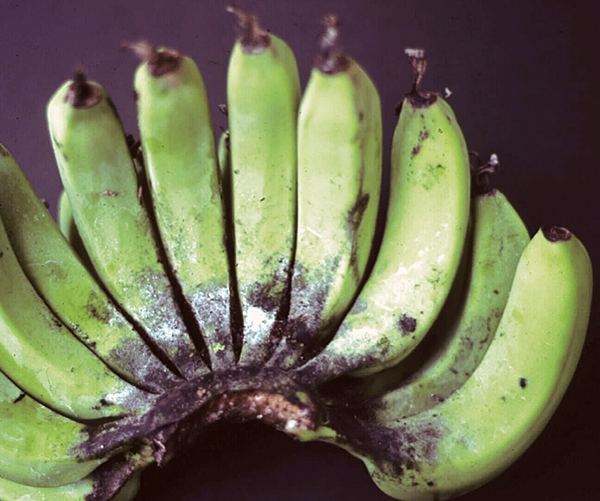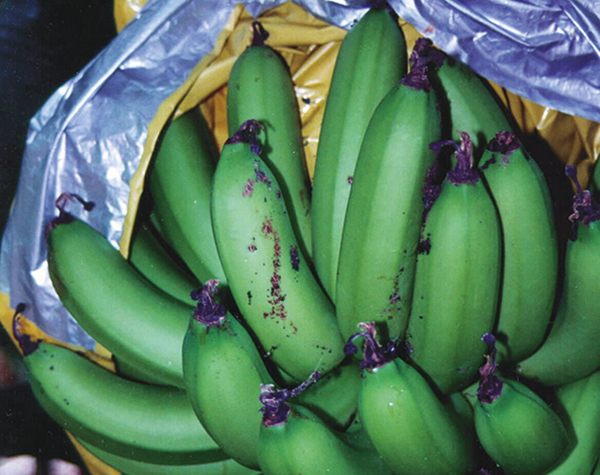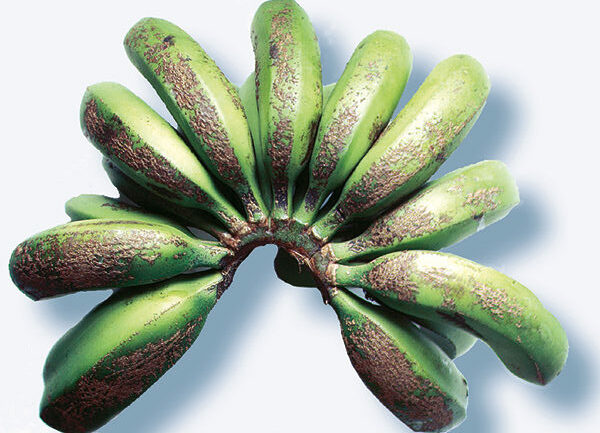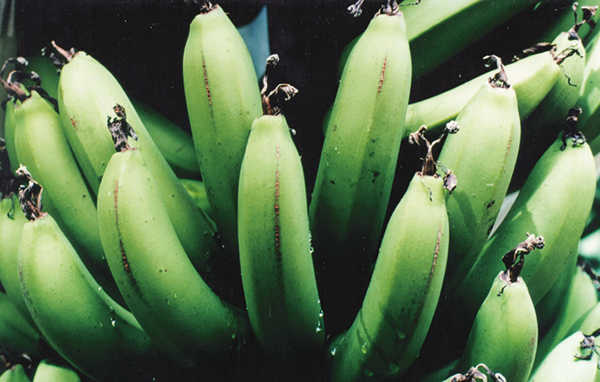Stem shatters
Panama disease (Fusarium wilt)
Biosecurity Alert
Cause: The fungus Fusarium oxysporum f. sp. cubense which is a soil-borne organism. It is spread in water, soil and planting material. It enters the plant through the roots, and blocks the conducting tissue within the plant resulting in wilting, yellowing of leaves and death of the plant.
Solution: There is no cure for affected plants. Use only approved planting material and do not plant in previously infested areas.
Biosecurity obligation: Panama is a notifiable disease and you must report any suspicious plants. If you suspect Panama disease you must notify Biosecurity Queensland immediately (13 25 23).
More info:

2,4-D damage
Cause: Injection of 2,4-D will kill the plant. Overspray or drift from herbicide application may cause lesser symptoms.
Solution: Be extremely careful with chemical applications.
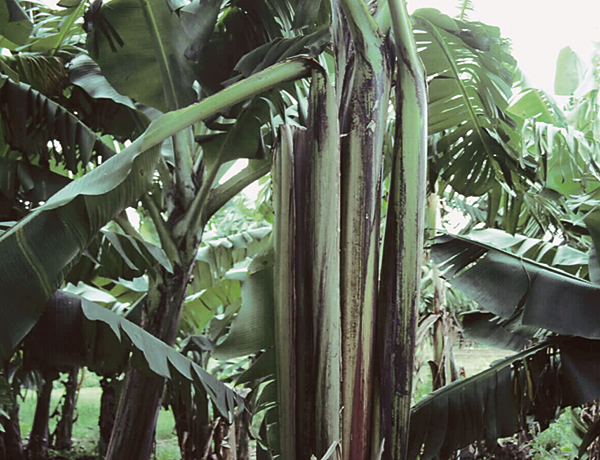
Tissue-cultured off-type
Cause: A genetic abnormality that occurs in tissue-cultured plants.
Solution: Remove affected plants and set additional following suckers on nearby plants.

Banana streak virus
Cause: The banana streak virus (BSV). Symptom expression is sporadic. Symptoms of cucumber mosaic are similar.
Solution: Do not take planting material from infected plants. Eradicate infected plants where symptoms are observed. Confirm diagnosis by looking for yellow black streaks or flashes on leaves or by laboratory tests.
